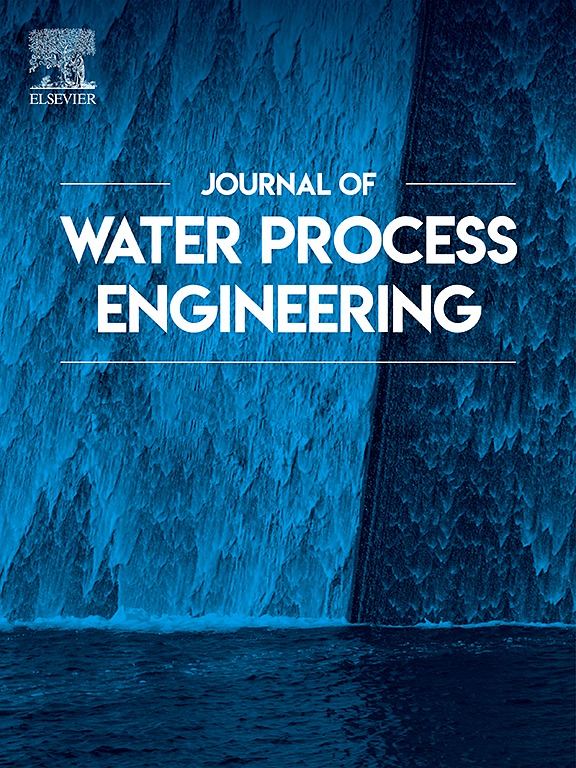Understanding the difference between the nano and micro bubble size distributions generated by a regenerative turbine microbubble generator using ozone
IF 6.3
2区 工程技术
Q1 ENGINEERING, CHEMICAL
引用次数: 0
Abstract
There is a genuine paucity of data concerning the relative significance of the nano and the microbubble size distributions that are collectively generated when operating microbubble generation devices. Accordingly, the current work aimed to address this knowledge gap by measuring the two size distributions generated by a regenerative turbine microbubble generator using ozone and assess the relative significance of the nanobubble fraction. The microbubble fraction was measured with a focus-beam reflectance measurement device and the nanobubble fraction with a nano particle tracking instrument. The latter was calibrated using latex spheres to understand method uncertainty and to optimise the measurement approach. Sauter mean diameters of 217 nm and 37 μm were reported for the nano and microbubble fractions, respectively, with half of the microbubbles being <5000 nm in size. A comparison of the size and number concentrations of the different bubble types revealed that the majority of the gas was contained within the microbubble fraction, and hence, this controlled the overall mass transfer performance of the system. Further, the nanobubbles were observed to be stable for 18 h with little change in their size or number, indicating there was no net transfer of their gaseous contents. Overall, the work revealed that when considering enhancing gas-liquid mass transfer processes with micro-nano bubble generators, the microbubble fraction is key.

求助全文
约1分钟内获得全文
求助全文
来源期刊

Journal of water process engineering
Biochemistry, Genetics and Molecular Biology-Biotechnology
CiteScore
10.70
自引率
8.60%
发文量
846
审稿时长
24 days
期刊介绍:
The Journal of Water Process Engineering aims to publish refereed, high-quality research papers with significant novelty and impact in all areas of the engineering of water and wastewater processing . Papers on advanced and novel treatment processes and technologies are particularly welcome. The Journal considers papers in areas such as nanotechnology and biotechnology applications in water, novel oxidation and separation processes, membrane processes (except those for desalination) , catalytic processes for the removal of water contaminants, sustainable processes, water reuse and recycling, water use and wastewater minimization, integrated/hybrid technology, process modeling of water treatment and novel treatment processes. Submissions on the subject of adsorbents, including standard measurements of adsorption kinetics and equilibrium will only be considered if there is a genuine case for novelty and contribution, for example highly novel, sustainable adsorbents and their use: papers on activated carbon-type materials derived from natural matter, or surfactant-modified clays and related minerals, would not fulfil this criterion. The Journal particularly welcomes contributions involving environmentally, economically and socially sustainable technology for water treatment, including those which are energy-efficient, with minimal or no chemical consumption, and capable of water recycling and reuse that minimizes the direct disposal of wastewater to the aquatic environment. Papers that describe novel ideas for solving issues related to water quality and availability are also welcome, as are those that show the transfer of techniques from other disciplines. The Journal will consider papers dealing with processes for various water matrices including drinking water (except desalination), domestic, urban and industrial wastewaters, in addition to their residues. It is expected that the journal will be of particular relevance to chemical and process engineers working in the field. The Journal welcomes Full Text papers, Short Communications, State-of-the-Art Reviews and Letters to Editors and Case Studies
 求助内容:
求助内容: 应助结果提醒方式:
应助结果提醒方式:


